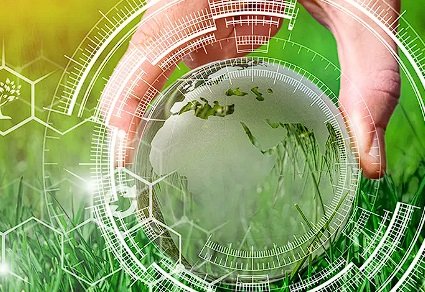
The Indian bioeconomy is witnessing unprecedented growth, emerging as a key driver of economic expansion. The recently released India BioEconomy Report 2024 by the Department of Biotechnology highlights that the sector was valued at over $165 billion in 2024, contributing more than 4.2% to the national GDP. With ambitious projections, the government anticipates this figure to reach $300 billion by 2030 and an astounding $1 trillion by 2047. This growth underscores the pivotal role of bio-based industries in shaping India’s economic future.
Understanding Bioeconomy
Bioeconomy refers to economic activities that harness biological resources, such as plants, animals, and microorganisms, as well as the replication of natural processes to produce goods and services. It emphasizes sustainability, renewable resources, and innovative technologies to create environmentally friendly solutions across multiple industries.
Current State of India’s Bioeconomy
India’s bioeconomy has seen exponential growth, nearly doubling in value over the last five years. From approximately $86 billion in 2020, it has surged to $165 billion in 2024. This expansion is accompanied by a significant rise in the number of bioeconomy-focused companies, which have increased by 90%, surpassing 10,000. Projections suggest that by 2030, this number will double, potentially generating up to 35 million jobs.
Key Contributors to the Sector
Several industries form the backbone of India’s bioeconomy, with the industrial sector leading the charge at $78 billion. This includes critical sub-sectors such as biofuels, bioplastics, and bio-based chemicals. The pharmaceutical industry follows closely, accounting for 35% of the total bioeconomy, with vaccine production playing a significant role. Additionally, biotechnology research and IT-driven innovations in biotech software and clinical trials are emerging as the fastest-growing segments, signaling new avenues for growth and technological advancement.
Regional Disparities in Bioeconomic Development
Despite the sector’s rapid expansion, its growth remains uneven across India. Five states—Maharashtra, Karnataka, Telangana, Gujarat, and Andhra Pradesh—collectively contribute over two-thirds of the total bioeconomy. Meanwhile, the eastern and northeastern regions account for less than 6% of the sector’s value. Addressing these regional imbalances through targeted investments and policy initiatives will be crucial for ensuring inclusive growth and maximizing the sector’s potential nationwide.
Challenges Hindering Growth
While the bioeconomy is poised for significant expansion, several challenges must be addressed to sustain high growth rates.
- Innovation and Scaling: Developing and scaling bio-based solutions require significant research funding and technological advancements.
- Policy and Infrastructure: The removal of regulatory and infrastructure barriers is essential to ensure smooth business operations.
- Regulatory Uncertainty: Policies related to genetically modified crops and other bio-based innovations need clear and consistent frameworks to encourage investment and development.
The BioE3 Policy: A Strategic Initiative
Recognizing the sector’s vast potential, the Government of India introduced the BioE3 policy in 2024. This initiative aims to position India as a global leader in bio-manufacturing by fostering strong networks among universities, research institutions, and industries. The policy prioritizes bio-based chemicals, precision biotherapeutics, and climate-resilient agriculture, setting the foundation for sustained innovation and economic expansion.
Future Prospects: A Trillion-Dollar Vision
India’s robust foundation in biotechnology, coupled with proactive government initiatives, places it in an excellent position to capitalize on bioeconomic growth. With ongoing assessments for new projects under the BioE3 policy, the opportunities for expansion are immense. However, for the country to realize its $1 trillion bioeconomy vision by 2047, it must address current challenges, foster innovation, and ensure equitable regional growth.
With the right strategies in place, India’s bioeconomy has the potential to not only drive economic prosperity but also lead the global transition towards a sustainable and bio-based future.

